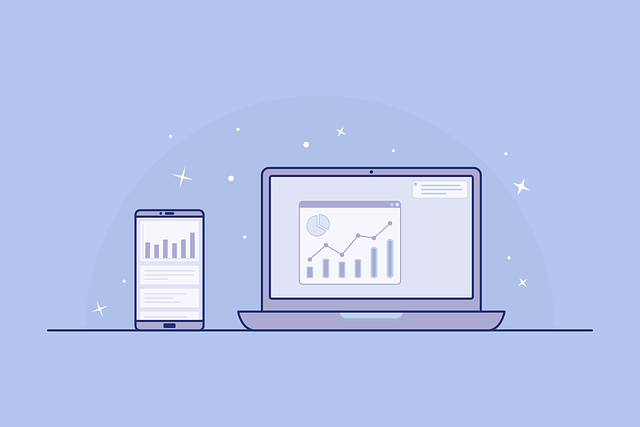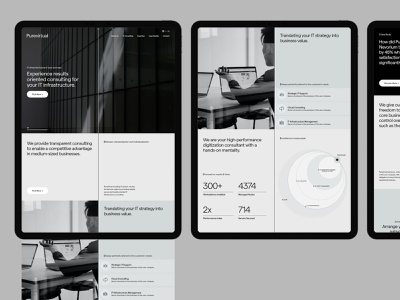
You've probably already heard about the Flexible grid and the Fluid pattern, but are you aware of other responsive design best practices? These techniques include Fluid visuals as well as Flexible grids and Column Drop patterns. This article will give you a brief overview of these techniques and how to incorporate them into your own design. This will make it much easier for you to complete the task. However, how can you actually use them on your website.
Flexible grids
A flexible grid is an essential component of responsive design when designing for mobile devices. This allows for you to scale content according to the device's dimensions and adjust the outer spacing to suit the screen's width or orientation. White space is not lost with flexible grids to maintain visual balance and consistency. You can also use them to create additional room for content. Flexible grids make mobile web development easier because they are customizable for every device.

Fluid pattern
The Fluid pattern is one of the best practices for responsive web design. It uses a grid-like structure that will expand and contract horizontally. This will make it appear more responsive on different screen sizes. Fluid patterns also work well on mobile devices. They are flexible and can be adjusted to fit your needs. They are flexible as they do not depend upon fixed units.
Column Drop
Column Drop is one the most popular responsive design patterns. This layout stacks content vertically, and uses fluid grids. Column drop layout patterns shift the columns as the viewport widens. A layout shifter is another option that works well on sites that contain many types of content. The layout shifter pattern uses different layouts to adapt for different screen sizes.
Flexible visuals
Flexible visuals are an essential component of responsive design. This is crucial in creating a user-friendly experience across multiple devices. Similar to content, the image should conform to the medium in order for the user to view it in the most appropriate way. It is important to avoid large images that take up too much space, especially when designing for mobile devices. You should also avoid using too many large images as they will slow down the loading process on mobile devices.

Media queries
Media queries are an effective tool to create flexible layouts of websites. You can use them to change the color of body text based on the size of the viewport, or to modify other aspects of the page. Media queries may have either minimum or maximal values. Most cases will only require one media query. Here are some tips on responsive design and media query. Also, make sure to read the Media Types section.
FAQ
How do I choose a domain name?
It is important that you choose a domain name that is memorable. If your domain name is not great, people won't be able to find you easily when they search the internet for your product.
Domain names need to be short and simple to remember, relevant for your brand, and unique. Ideal domain names are something people would type into their browser.
Here are some ideas to help you choose a domain.
* Use keywords related your niche.
* Do not use (-), hyphens in your numbers and symbols.
* Don't use.net or.org domains.
* Don't use words that have been used before.
* Avoid generic terms like domain or website.
* Check to make sure it's there.
Does A Good Portfolio Make Me More Likely To Be Hired As A Web Developer?
Yes. You must have a portfolio to be considered for a job in web development or design. Portfolios should showcase examples of your skillsets and experience.
Portfolios typically include examples of past projects. These can be anything that shows off your skill set. Portfolios should contain everything, from wireframes, mockups, logos and brochures to websites, apps, and websites.
How to design a website?
Understanding your customers' needs is the first step. What are they looking for when they visit your site?
What issues might they be facing if they can't locate what they're looking at on your site.
You now need to know how to fix the problems. Make sure everything looks good on your website. It should be easy for users to navigate.
It is important to have a professional-looking website. Make sure that it doesn't take too long to load. If it takes too much time, people will not stay as long as they want. They will move on to something else.
If you're going to build an eCommerce site, you need to think about where all your products are located. Do they all reside in one spot? Are they in one location?
It is important to decide whether you will sell only one product or multiple products at once. Do you prefer to sell one type of product, or several types?
Once you have answered these questions, you can begin building your site.
Now, it's time to take care of the technical aspects. What will it take to make your site work? Is it fast enough? Can it be done quickly by people using their computers?
Will people be able to buy something without having to pay extra? Is it necessary for them to register before they are able to purchase anything?
These are important questions that you must ask yourself. These questions will help you to make the right decisions and move forward.
What is a UI designer?
A user interface (UI), designer is responsible for designing interfaces to software products. They design the visual elements and layout of an application. They may also include graphic designers.
The UI Designer needs to be a problem solver and have a good understanding of how people use computers.
A UI Designer should have a passion in technology and software design. The field requires that the designer understands all aspects of it, from designing ideas to writing code.
They should have the ability to design using various techniques and tools. They must be able think creatively and find innovative solutions to problems.
They must be organized and detail-oriented. They should be able develop prototypes quickly, efficiently and accurately.
They should feel at ease working with clients, large and small. They should be able to adapt to changing situations and environments.
They should be able and willing to communicate effectively with others. They should be able to express their thoughts clearly and concisely.
They should be well-rounded individuals who possess strong communication skills.
They must be motivated and driven.
They should be passionate and dedicated to their craft.
What is a static web site?
A static website contains all content stored on a server that visitors can access via web browsers.
The term "static" is used to refer to the absence of dynamic features like changing images, video, animations, etc.
This type of website was originally created for use in corporate intranets. It has since been adopted both by individuals and small companies who are looking for simple websites that do not require any programming.
Static sites have become increasingly popular because they require less maintenance. Static sites are easier to maintain and update than fully-featured websites with multiple components (such as blogs).
They load much faster than dynamic counterparts. They are ideal for mobile users and those with slow Internet connections.
A static website is more secure than its dynamic counterparts. Static websites are much harder to hack than dynamic ones. Hackers have limited access to data within a database.
There are two main methods to create static websites:
-
Using a Content Management System.
-
Static HTML Website Creation
The best one for you will depend on your specific needs. A CMS is the best choice for anyone who is new to building websites.
Why? Because you have complete control over your website. With a CMS, you don't need to hire someone to help you set up your site. Upload files to the website server.
You can still learn how to code and create a static website. But you'll need to invest some time learning how to program.
Can I use a Template or Framework on My Website?
Yes! Many people use pre-built templates or frameworks when creating a website. These templates contain all the code needed to display information on your page.
These templates are the most in-demand:
WordPress - One of the most used CMSes
Joomla - Joomla! - another open source CMS
Drupal - Drupal is an enterprise-level software that large organizations can use
Expression Engine is a Yahoo CMS that allows you to create custom CMS sites.
There are hundreds of templates available for every platform. It should not be difficult to find the right one.
What Websites should I make?
This question is dependent on your goals. If you are looking to build a business from your website, it may be beneficial to focus on selling online products. You'll need to build a robust eCommerce site to do this successfully.
Blogs are another popular type of website. Each of these requires different skills and tools. You will need to be familiar with blogging platforms like Blogger or WordPress if you wish to create a blog.
It is important to choose the right platform for your site. There are many themes and templates that you can use for free.
Once you've selected a platform to build your website, you can start adding content. You can add images, videos, text, links, and other media to your pages.
You can publish your website online once you have launched it. Visitors can access your website in their browsers once it is published.
Statistics
- Did you know videos can boost organic search traffic to your website by 157%? (wix.com)
- In fact, according to Color Matters, a signature color can boost brand recognition by 80%. There's a lot of psychology behind people's perception of color, so it's important to understand how it's used with your industry. (websitebuilderexpert.com)
- When choosing your website color scheme, a general rule is to limit yourself to three shades: one primary color (60% of the mix), one secondary color (30%), and one accent color (10%). (wix.com)
- Studies show that 77% of satisfied customers will recommend your business or service to a friend after having a positive experience. (wix.com)
- The average website user will read about 20% of the text on any given page, so it's crucial to entice them with an appropriate vibe. (websitebuilderexpert.com)
External Links
How To
How can I become a UI designer?
Two methods can be used to become a UI developer:
-
You can earn a degree in UI Design by going to school.
-
You can become a freelancer.
For you to be able to finish school, you must attend college or university. This includes computer science, psychology, business, and art.
You can also enroll in classes at state universities or community colleges. Some schools offer programs for free, while others require tuition fees.
After graduation, you will need to find employment. If you are going to be working for yourself, you will need to build your client list. You should network with other professionals to let them know that you exist.
There are many opportunities to intern for companies that specialize on developing web applications. Many companies hire interns before they hire full-time staff.
A portfolio will help you get more work once you have established it. Your portfolio should contain your work samples and details of the projects you worked on.
It's a great idea to email your portfolio to potential employers.
As a freelancer, you will need to market yourself. You can also advertise your services via job boards like Guru, Indeed, Guru, Upwork, and Freelance.
Freelancers frequently receive assignments from recruiters who post jobs online. These recruiters are looking for qualified candidates to fill certain positions in specific industries.
These recruiters typically provide the candidate with a project brief outlining the position's requirements.
As a freelancer, you are not required to sign any long-term contracts. If you are looking to make a move, however, it is advisable to negotiate an upfront payment.
Many designers prefer working directly for clients and not through agencies. Although this may seem appealing, many people lack necessary skills.
Agency workers often have extensive industry knowledge. They have access to resources and training that enable them to produce high quality work.
Aside from these benefits, agency workers are often paid a higher hourly pay.
One downside to working through an agency is the inability to have direct contact at work with the employer.
As a UI designer you need to be motivated, creative, flexible, detail-oriented and communicative.
You must also possess excellent verbal and written communication skills.
UI designers are responsible in designing websites through the creation of user interfaces (UI), as well visual elements.
They also ensure that the site meets users' needs.
This requires understanding what information visitors want and how the website should function.
Wireframes are created by UI designers using a variety of tools. Wireframing helps them visualize the layout of a page before beginning their designs.
It is easy to create your own wireframes using the online templates.
Some designers specialize in UI design alone, while others combine UI with graphic design.
Photoshop is a popular software used by graphic designers for editing images.
Adobe InDesign is then used to layout pages and layouts.
Photographers capture images using digital cameras or DSLRs.
The photos are then uploaded into a photo editing program. Here they can add captions, filters, or other effects.
Afterward, the photographer saves the image in a file format compatible with the website.
It is crucial to consider all aspects when designing a website.
This includes research, planning, wireframing, prototyping, testing, coding, content creation, and publishing.
Research - It's essential to conduct thorough research before starting a new project.
Planning - Once your research is complete, you can begin to create a plan.
Wireframing - A wireframe is a preliminary sketch of a web page or application.
Prototyping -- Prototypes allow you to make sure that your final product is exactly what you imagined.
Testing - To ensure that the prototype works correctly, it should be subject to multiple rounds of testing.
Coding - The process of writing computer software code is called Coding.
Content Creation – Content creation includes everything, from the writing of copy to managing social networks accounts.
Publishing is the act of uploading files and making sure that the site can be accessed.
You will need to have a broad knowledge of different projects in order as a freelance UX/UI developer.
Some companies, for example, only need wire frames. Others require complete prototypes.
Depending on the type of project you accept, you may be asked to complete specific tasks.
For instance, if your job is to create wireframes you might have to make several over the course of time.
If you're asked to develop a site prototype, it may be necessary to make it fully functional.
No matter what type of project you are working on, it is important to have good interpersonal skills.
You need to build strong relationships with potential employers as freelancers are hired primarily through referrals.
In addition, you must be able to communicate effectively both verbally and in writing.
A portfolio is an essential part any freelancer's arsenal.
It is a showcase of your work and a demonstration of your ability produce high-quality outputs.
This can be done online by creating a portfolio.
The best way to get started is to find websites similar to yours.
Next, search these sites to discover which site offers what services.
After identifying the best practices that you believe to be most successful, you can go ahead and implement them.
You can also include links to your portfolio in your resume.